San Cristóbal Island
The second island I visited on my Galápagos adventure was San Cristóbal, a two-hour ferry ride from Santa Cruz, but a world away from the hustle of the tourists. This island had a real community of Galápagos citizens who are trying to find a balance between maintaining their quality of life, protecting the islands and serving the tourists. I really enjoyed the relaxation of this island and the variety of free accessible activities.
The ferry between the islands, and a sea lion snoozing in the city sign.
I also loved all the sea lions hanging out everywhere… on the rocks, on the docks,
on the walkways, and of course, on the beach.
|
In the evenings, the sea lions come ashore and take over the beach.
I’ve included a video at the end of this post to help you get the full effect of their community.
|
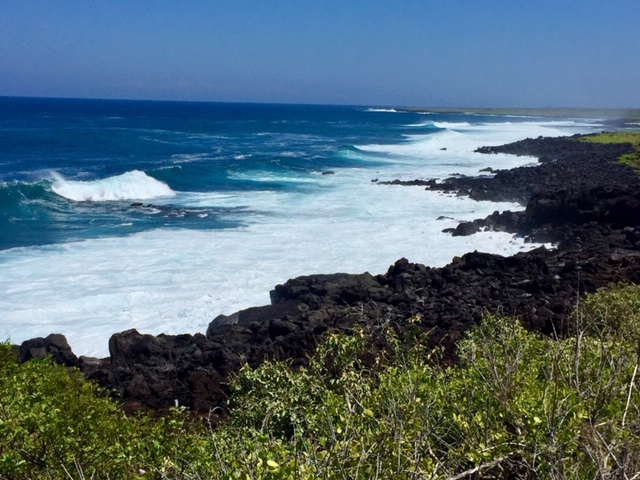 |
| On my first day, I took a long hike along the shoreline… |
A Lava Lizard
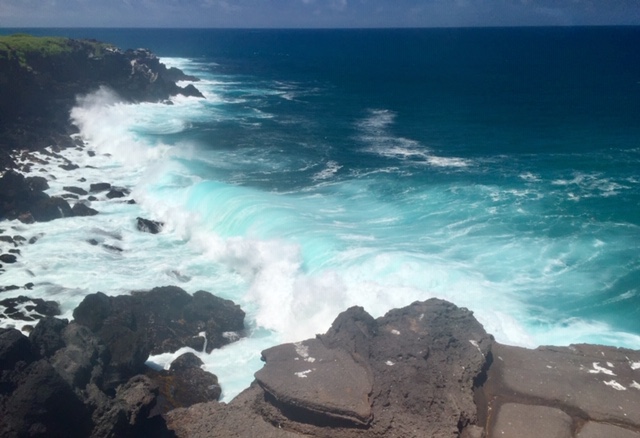 |
| …and watched a dozen sea turtles feeding in these massive breakers. |
 |
| A Land Iguana |
This was my favorite cove for snorkling. I spent many hours here on two different days
swimming with the playful sea lions and the graceful sea turtles.
 |
| The Islands have some interesting shells, too! |
Then, as a lover of the water, I took another snorkling and seabird tour. This time, my tour mates included people from Ecuador, El Salvador, Israel, Canada and the United States.
| If you look closely, you’ll see the red puffed-up breast of the male frigate bird, attempting to attract a mate. |
This is called Sleeping Lion Rock. Surprisingly, the ocean water was a little chilly, so we donned wet suits to snorkel around its base and peer into the beautiful blue depths. I’ve never been in water so deep, it was exhilarating!
Since I don’t have a fancy underwater camera, the following photos are courtesy of my National Park Service Guide Lenin Andrade Endara. Here is a look into the underwater world of the Galápagos.
Since I don’t have a fancy underwater camera, the following photos are courtesy of my National Park Service Guide Lenin Andrade Endara. Here is a look into the underwater world of the Galápagos.
| My most favorite memory is swimming with the sea turtles! |
| The sea lions love to rush at you, or surprise you from behind. They are so playful! |
The Galápagos Islands, by land and sea, were a great birthday vacation.
But each night when I was enjoying my ceviche beach-side with a glass of wine or an icy limonada, I spent a lot of time thinking about this fragile ecosystem, and all the impact that tourists are making -that I was making – on these islands. (You didn’t really think this post was just going to be pretty vacation photos, did you?) A visitor center display helped me understand the bigger picture of what really is going on out there, so here’s a summary for you:
The Problem with Food:
 So there it is. The Galápagos Islands are an incredibly beautiful and unique place. I’m really glad I was able to go and learn more about its ecological importance in the world. I know that the Ecuadorian Government, and the Galápagos National Park along with World Wildlife Fund, UNESCO and a zillion other smaller non-profits and local initiatives are trying to find a way to balance the amazing opportunity of experiencing this place, while protecting what the tourists are coming to see. There are signs reporting on these efforts in the airports, and at the visitor centers. Unfortunately, I know that most people don’t read signs. I have no idea what cruise ship visitors are taught, but on my two scuba trips, neither of our guides briefed us on the fragileness of this place or how we could do our part to protect it. So, we jumped in the water with all of our toxic suntan lotions. I watched divers standing on reefs, and way too many people crowding and trying to touch the animals. Watch the video below and you’ll see how close my guide swam to the animals, too. I thought this was sad. The type of tourists who can pay for a vacation on the Galápagos Islands are the very same people who have the means to reduce their impact and care for the environment – on the islands, and back home. Somehow, I think, if we want this magical place to remain magical, the tourists need to be engaged to do their part in protecting and preserving the Galápagos Islands for the future.
So there it is. The Galápagos Islands are an incredibly beautiful and unique place. I’m really glad I was able to go and learn more about its ecological importance in the world. I know that the Ecuadorian Government, and the Galápagos National Park along with World Wildlife Fund, UNESCO and a zillion other smaller non-profits and local initiatives are trying to find a way to balance the amazing opportunity of experiencing this place, while protecting what the tourists are coming to see. There are signs reporting on these efforts in the airports, and at the visitor centers. Unfortunately, I know that most people don’t read signs. I have no idea what cruise ship visitors are taught, but on my two scuba trips, neither of our guides briefed us on the fragileness of this place or how we could do our part to protect it. So, we jumped in the water with all of our toxic suntan lotions. I watched divers standing on reefs, and way too many people crowding and trying to touch the animals. Watch the video below and you’ll see how close my guide swam to the animals, too. I thought this was sad. The type of tourists who can pay for a vacation on the Galápagos Islands are the very same people who have the means to reduce their impact and care for the environment – on the islands, and back home. Somehow, I think, if we want this magical place to remain magical, the tourists need to be engaged to do their part in protecting and preserving the Galápagos Islands for the future.
The Problem with Tourism:
250,000 people visit the Galápagos each year and they all need water, electricity and food sources. They need hotels, restaurants, stores, tourist agencies, boats, taxis, and airports. Then, they need all the people who build and work in those places. And so more infrastructure is needed such as roads, Internet, hospitals, as well as a place to put all the garbage created. People from main-land Ecuador move to the Galápagos everyday for good paying jobs working for the tourists. And ofcourse, their ecological footprint and their pollution impacts the wildlife and destroys the very habitats that the tourists are coming to see. But tourism brings $150 million to the Ecuadorian economy each year. Obviously, the Ecuadorian government is not going to turn away from that.
Solution: The Galápagos National Park is trying to find a balance between the number of visitors, and an amount of reasonable impact, while protecting the majority of the environment. Currently 97% of the islands remain wild for the wildlife, which keeps the tourists coming in the first place. But at the most popular wildlife destinations, the Park Service has set a maximum persons limit to minimize the number of people in the same place at the same time. They also require that guides accompany all tourists. A steep entrance fee has also been enacted with the money going towards the efforts of the National Park.
The Problem with Water:
People live on five of the islands, but there are only two islands with natural water sources. The other three islands must import all of their fresh water by ship. Can you imagine how expensive this is? Tourists buy and carry water in bottles which creates more plastic, and more garbage on the islands.
Solution: Inhabited communities are trying to rely more on rainwater, which isn’t sustainable as the climate is changing and the islands are susceptible to drought. In the meantime, there’s posters everywhere reminding tourists that “every drop counts”.
The Problem with Energy:
All the people on the islands need energy for electricity and fuel for boats and cars. Currently, since Ecuador has a vast supply of petroleum in the Amazon, they ship in a tanker of petroleum a day. But in 2001, there was a giant oil spill which ofcourse killed a lot of animals and destroyed a lot of habitat. The Ecuadorian government knows that it’s only a matter of time before this happens again.
Solution: The government has set a goal to convert the Islands completely to alternative energy sources by 2020. It’s not going to happen. It’s 2019, and although they do have some alternatives in place, they’re still not close to reaching their goal. More wind farms hurt birds, more solar panels take up too much land and can impact the wildlife. They don’t yet seem to have any other ideas.
The locals and the tourists need food to eat. The local farmers can’t keep up with demand on the amount of rocky land they have currently zoned for agriculture. But if they expand their farms, it will destroy wild habitats. The local fishing fleet can’t keep up with the demand and stay within the harvest limits of the marine park.
Solution: Currently, 1,100 crates of food and beverages are shipped into the islands daily to feed the population. And if they continue to grow, the will need more in the future. So, there’s a movement among the locals to try to find a balance between intensely growing organic foods and protecting the environment. Either way, food is very expensive on the Galápagos Islands.
 So there it is. The Galápagos Islands are an incredibly beautiful and unique place. I’m really glad I was able to go and learn more about its ecological importance in the world. I know that the Ecuadorian Government, and the Galápagos National Park along with World Wildlife Fund, UNESCO and a zillion other smaller non-profits and local initiatives are trying to find a way to balance the amazing opportunity of experiencing this place, while protecting what the tourists are coming to see. There are signs reporting on these efforts in the airports, and at the visitor centers. Unfortunately, I know that most people don’t read signs. I have no idea what cruise ship visitors are taught, but on my two scuba trips, neither of our guides briefed us on the fragileness of this place or how we could do our part to protect it. So, we jumped in the water with all of our toxic suntan lotions. I watched divers standing on reefs, and way too many people crowding and trying to touch the animals. Watch the video below and you’ll see how close my guide swam to the animals, too. I thought this was sad. The type of tourists who can pay for a vacation on the Galápagos Islands are the very same people who have the means to reduce their impact and care for the environment – on the islands, and back home. Somehow, I think, if we want this magical place to remain magical, the tourists need to be engaged to do their part in protecting and preserving the Galápagos Islands for the future.
So there it is. The Galápagos Islands are an incredibly beautiful and unique place. I’m really glad I was able to go and learn more about its ecological importance in the world. I know that the Ecuadorian Government, and the Galápagos National Park along with World Wildlife Fund, UNESCO and a zillion other smaller non-profits and local initiatives are trying to find a way to balance the amazing opportunity of experiencing this place, while protecting what the tourists are coming to see. There are signs reporting on these efforts in the airports, and at the visitor centers. Unfortunately, I know that most people don’t read signs. I have no idea what cruise ship visitors are taught, but on my two scuba trips, neither of our guides briefed us on the fragileness of this place or how we could do our part to protect it. So, we jumped in the water with all of our toxic suntan lotions. I watched divers standing on reefs, and way too many people crowding and trying to touch the animals. Watch the video below and you’ll see how close my guide swam to the animals, too. I thought this was sad. The type of tourists who can pay for a vacation on the Galápagos Islands are the very same people who have the means to reduce their impact and care for the environment – on the islands, and back home. Somehow, I think, if we want this magical place to remain magical, the tourists need to be engaged to do their part in protecting and preserving the Galápagos Islands for the future.
Here are a couple of videos for you to enjoy – swimming with sea turtles,
and the not so quiet nightly gathering of the sea lions on the beach.
If you can’t see them, go to onthewingadventures.blogspot.com




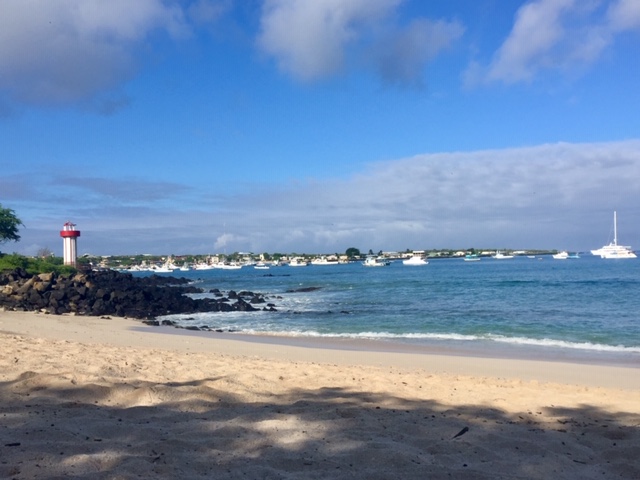

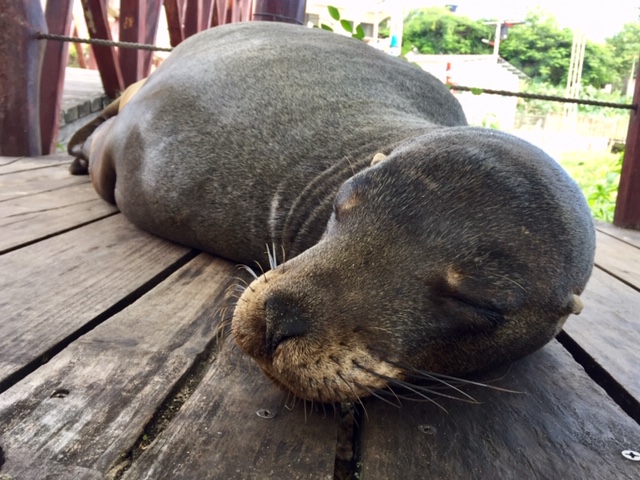
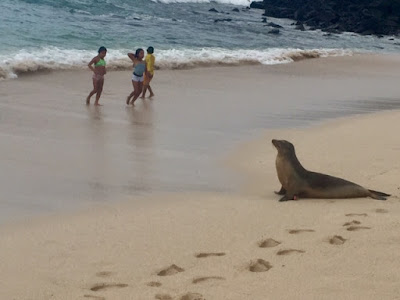
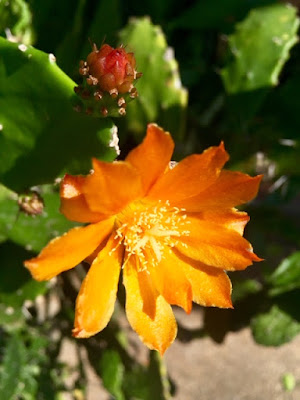
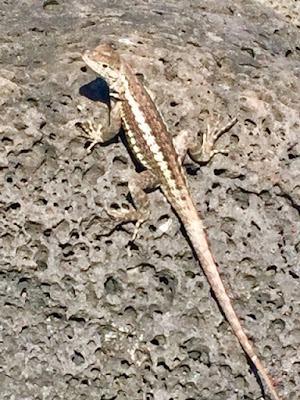
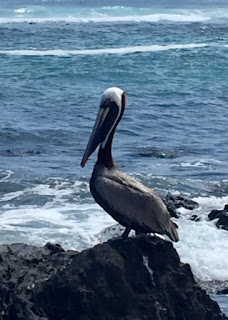
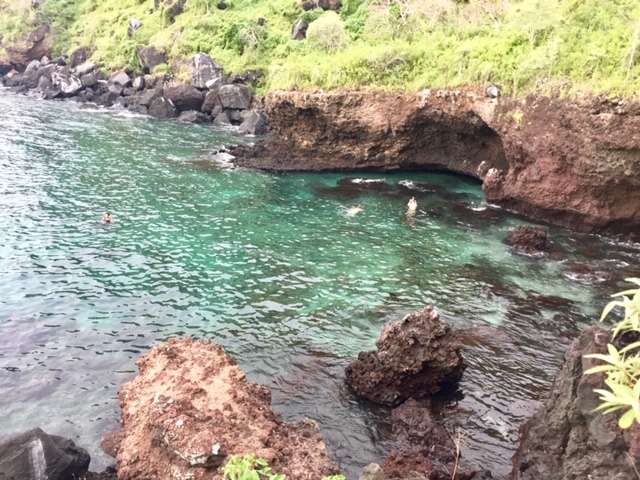
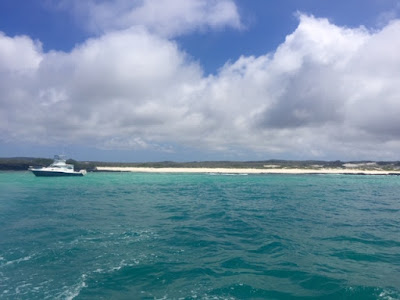

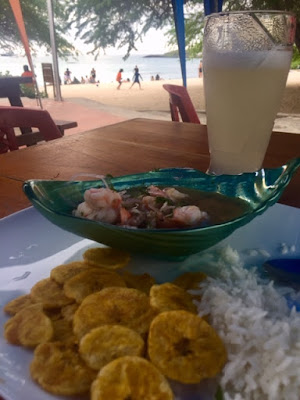



Ms. Long
What an incredible experience. Thank you for sharing it with us! Happy 50th trip around the sun, Becky! XO
Julieth y Maria Jose
It really is the best way to celebrate your birthday, I love every detail you give of the trip 🙂